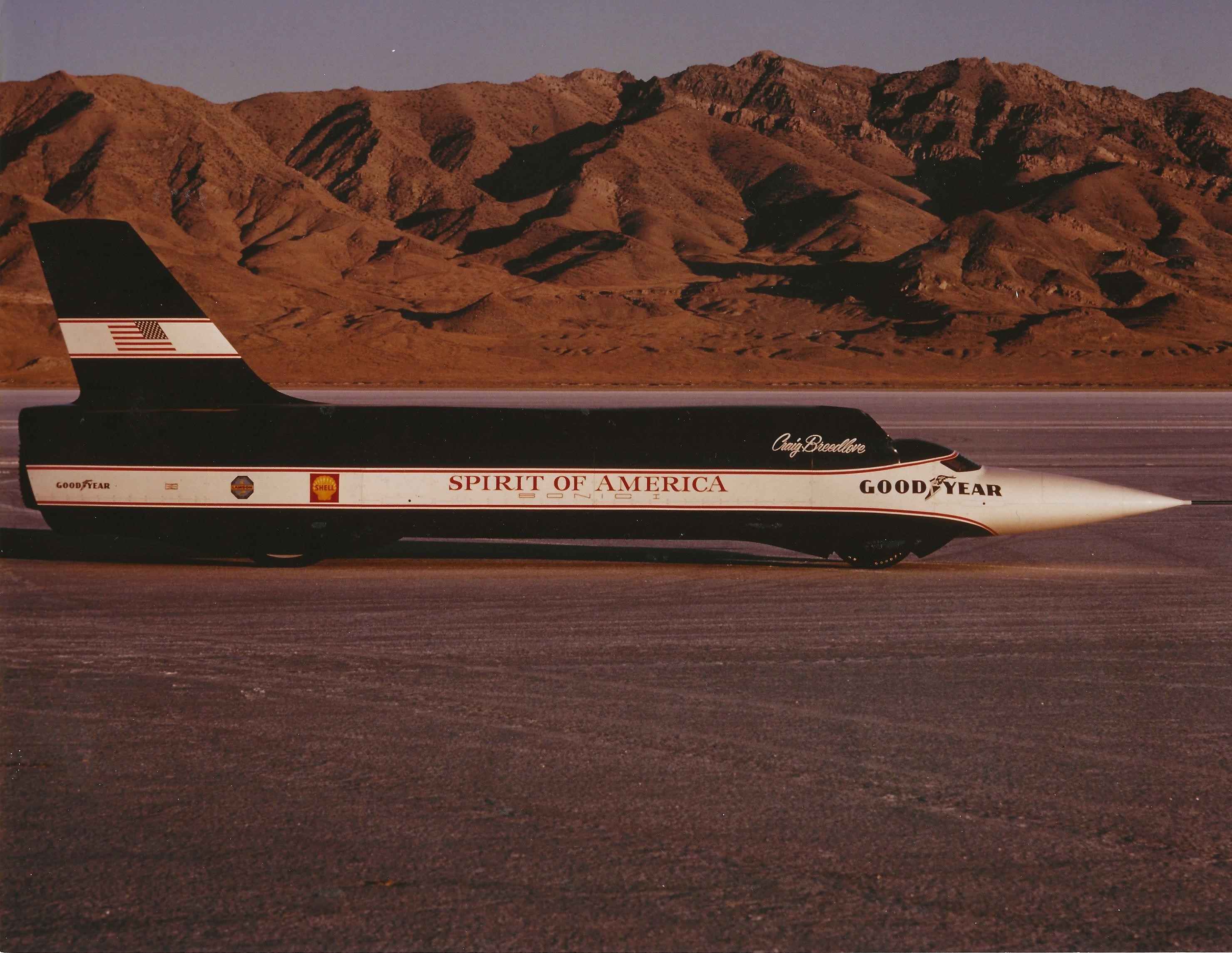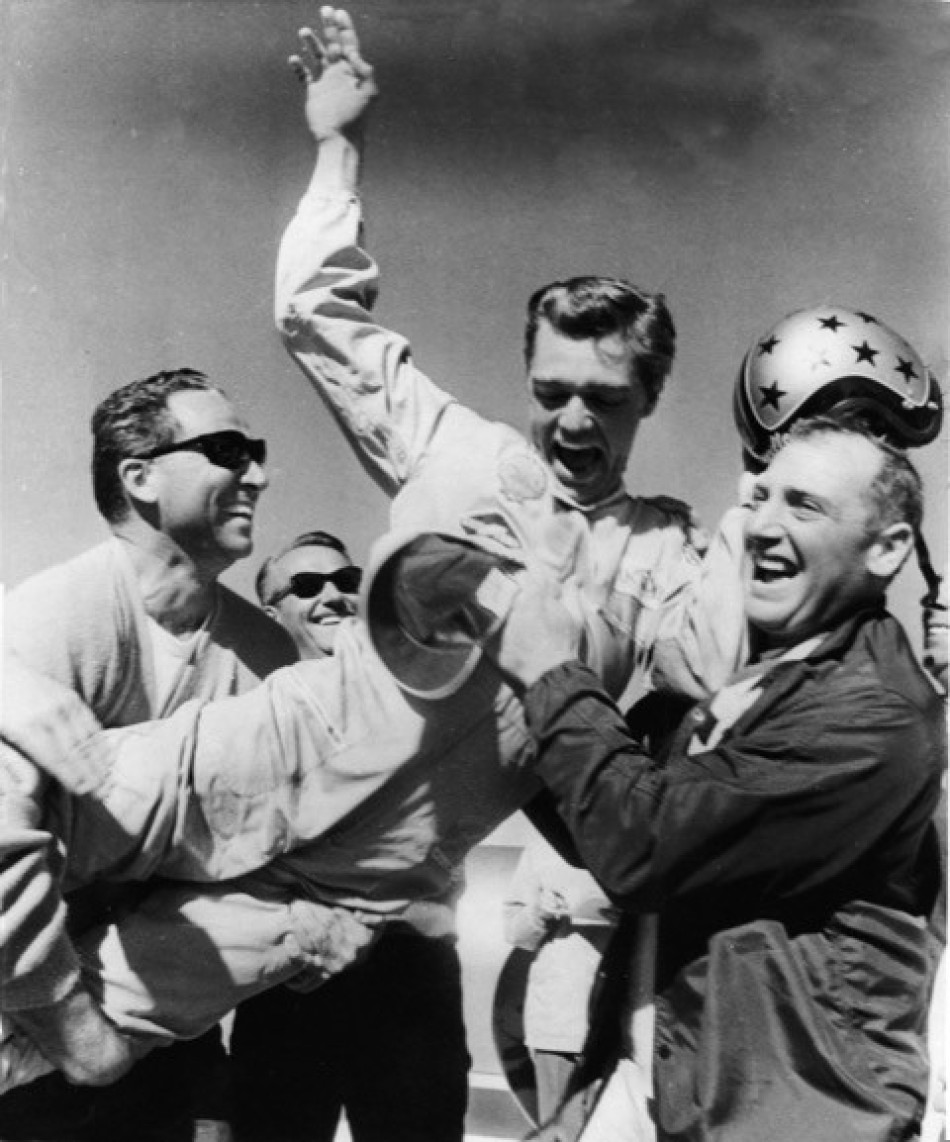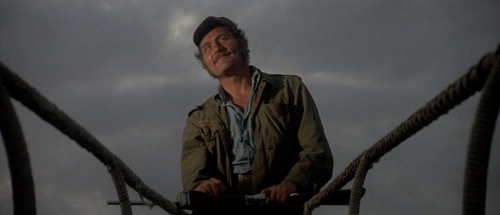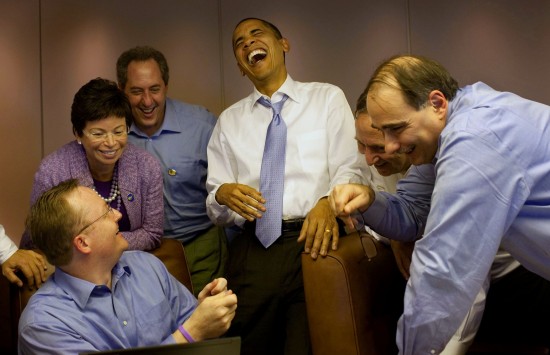There’s a delightful irony that Craig Breedlove lived to be 86. Of all
the record breakers active in what might be described as the most
dangerous of land speed racing’s many eras , he was the one with the
closest acquaintance with death.
Without question, in the realm of speed –
or indeed, any human endeavour – he laid just claim to be the coolest
man on earth. And his passing on April 4th robs the racing world of one of its most courageous and colourful characters.
He
had the film star looks, the laconic drawl, and the sheer stones. When
it came to going fast in a land-bound vehicle, nobody pushed the
envelope with such passion and persistence.
Born
in Los Angeles on March 23, 1937, it was natural that he should become
attracted to drag racing, but it was when he listened to a speech by
President Kennedy – the one in which he spoke of not what your country
can do for you but what you can do for your country – that a dream
inspired initially by John Cobb was truly cemented. He would win back
the land speed record for America.
Some
of the twists and turns that led to the creation of the dramatic
three-wheeled Spirit of America were pure Breedlove, not least the day
he brazenly inveigled himself into the office of Bill Lawler, the head
man at Shell, to pitch his project. By serendipitous coincidence Lawler
was expecting a Victor Breedlove to come for an appointment, but as he
was erroneously ushered into the big man’s office Craig immediately
seized on the pure coincidence to gain the 10 minutes he needed in which
to sell Lawler on his project. Truly, his destiny was well mapped out
for him.
His first attempt, in 1962, failed. The
Spirit needed more work, and on the way home from Bonneville he admitted
that he wept when he learned of rival Glenn Leasher’s death in the
Infinity jetcar. But, undaunted, he went back in August 1963 and
achieved an average of 407.447 mph. The FIA declined to recognise it
since his car was propelled by pure thrust rather than driving through
its wheels. But the motorcycle authority, the FIM, was happy to accept
the record on the basis that the Spirit could be counted as a motorcycle
and sidecar. The FIA then woke up and ratified his subsequent records
of 468.719 and 526.277 in October 1964, which were won during that
perilous game of Russian Roulette that he played with rival Art Arfons.
But that third record also brought him into his first close acquaintance
with the Grim Reaper, on October 15th.
The
beautiful blue and silver missile with the Stars and Stripes proudly
painted on its high tail fin resembled a ground-based airplane as he
blasted across Bonneville’s salt. All seemed good, but in the United
States Auto Club’s timekeeping shack there was consternation. His speed
was strong and backed his previous run sufficiently for them to know
that he had set another new record. But one observer noted with horror
that as the parachute bag flew from the back of the car when Craig
deployed the braking device, it was followed immediately by the ‘chute
itself.
In the cramped cockpit Craig
remained cool, knowing he had a back-up ‘chute. But when he deployed
that the speed was still too great and it, too, followed the first. And
now without means of retardation, he was fast approaching the end of the
course. Beyond that were a couple of miles of rough salt… And a line of
telegraph poles that ran to nearby Wendover and fronted a high bank
that surrounded a brine lake…
Spirit’s
Goodyear single-caliper disc brakes were only designed for use below
180 mph, and when in desperation he stamped on the pedal the friction
literally melted them. Still running at more than 400 mph, he was out of
control.
He gently nudged Spirit into the rough,
slushy salt, hoping that the rolling drag would lose him some of that
now unwanted speed, but still he was headed towards the line of
telegraph poles as three tracks two inches deep marked his passage. With
no control over his direction, he could only duck his head as the
outrigged and aerodynamically shrouded left rear wheel scythed clear
through the base of one them. And still Spirit would not slow down
enough.
Instead, it rushed the high
bank, then was literally launched over it before flying a few feet and
nosediving into the brine lake. He pitched off the canopy as the nose of
the stricken vehicle started to sink, then swam 10 feet to the shore
and a hysterical reunion with his horrified crew.
He
couldn’t believe his miraculous deliverance, and celebrated it with
raised fists, falsetto laughs and a string of one-liner quips, all
perfectly understandable in the extraordinary circumstances, as his
family and friends hugged him with raw emotion.
“For my next trick… I’ll set myself afire!”
“All this way and I’m gonna drown!”
“I broke my racer…”
“If Petrali missed the time on that, boy he’s out of business!”
“What was my time, gold darn it. Did I break the record?”
He did, with that 526.277 mph clocking.
But 12 days later he lost that hard-won
record and the title of the fastest man on earth to arch-rival Art, who
took his much more powerful brute Green Monster to 536.710 mph on
October 27th.
Stung, Craig acquired a
similar General Electric J79 turbojet to Art’s, and secretly set-about
creating an all-new four-wheeler over the winter. It was almost 35 ft
long, with a distinctive coke bottle shape for maximum aerodynamic
efficiency, and the intrepid pilot sat right up front in the
needle-shaped nose. Spirit of America – Sonic 1 was intended to have
supersonic potential. And a year later the two inveterate gunslingers
met again on the salt.
On a poor
surface, in October 1965, Craig discovered that Sonic 1 had better
stability and manoeuvrability than the old car. As he felt a sensation
like being sprayed all over with a million tiny streams of high-pressure
water as he breached 500, he told his biographer Bill Neely, “The
acceleration, mixed with the funny sensation on my skin, made me a
little bit giddy. I felt like giggling. If I had told anybody that I was
out there running the car up and down at 500 mph and giggling, I would
have been carted off in a straitjacket in the back of Ted Gillette’s
ambulance. It wasn’t the straitjacket that worried me so much – it was
the ride with Ted. I’d take my chances with the Spirit any day!”
But
the further he went above 500 mph, the more he began to realise that it
had some innate flaws. Over 550 he encountered another frightening
sensation, as gradually he was seeing more of the sky than the white
salt as the front end began lifting. Problems with the motor and
deformation of the body panels further increased the tension within the
Breedlove camp.
“I knew I couldn’t go
any faster because of the stop on the throttle pedal, but it gave me a
kind of thrill to try,” he told Neely. “Then I got a horrifying
sensation – I began to lose sight of the horizon. At first I thought it
was an optical illusion because of the 600 mph speed. I quickly realised
it wasn’t an illusion. The front end of the car was lifting. I was
starting to fly!”
Again, he lost a parachute as he sought
to slough off speed, but this time the heavy-duty brakes and mushy salt
helped him to slow before he got into real trouble, though it still took
him five miles off course before the car settled in eight inches of
briny mud.
“This time, there was no
laughing jag,” he admitted. Instead, he was angry. He was also scared.
But as he would readily admit, “if you’re not a little bit scared of
this thing, you’re not playing with a full deck.” Typically, he still
wanted to get straight back into the car and try again, but that wasn’t
possible. Eight days of hard labour were necessary to get the car back
into shape. And during that period of downtime he and Art had had one of
those chance encounters, something you could imagine Gary Cooper and
Robert Ryan having in a Hollywood cowboy film. It typified the sheer
courage and determination that made them such extraordinary men.
Trying
to make sense of it all, Craig was taking a quiet walk behind
Wendover’s Stateline Casino when he bumped into Art. Like the
gunslingers that they were, they metaphorically toed the ground as their
hands hovered over their Colt 45s as they began a stilted conversation.
“Now that you’ve got your car straightened out, Craig, I guess you’ll break the record again,” Art began.
“That’s
right, Art,” Craig replied. “I’m going to break the record tomorrow.
You were right about the J-79. It really is powerful.”
Art
nodded. “Well, what I want to know is if you break my record of 536 and
go, say, 546, and I come back and go 556, what are you going to do? Do
you intend to come back and keep up this game of Russian Roulette, where
we go back and forth until one of us gets killed and that’s the end of
it?”
Craig looked him in the eye thoughtfully, and said, “Yeah, I guess so, Art.”
Art nodded again. “Okay, that’s all I wanted to know.”
Now,
in arguably the greatest duel in land speed history, each knew exactly
what they were facing over and above the inherent perils of their
calling. And neither was prepared to back down.
The next morning Craig did break Art’s record, averaging 555.483 mph to set his fourth new mark.
But on November 7th
Art took Craig’s hard-worn record away. With almost no fuss he blasted
the Green Monster up and down the salt to average 576.553 mph, and enjoy
his own third success. But just as he completed the second run though
the measured mile the offside rear Firestone tyre burst due to the
weight-jacking torque effects of the J-79. He managed to bring the
damaged machine to a safe halt, but he was through for the season. And
now the onus was on Craig to respond. Sensing the mounting pressure
Goodyear said he didn’t need to, but of course he felt that he did. He
didn’t want his sponsor to lose the bragging rights to its biggest
rival.
“It was as if the other gunfighter had winged me but had run out of shells,” he told Neely. “The next shot was mine.”
What made Craig Breedlove so outstanding was his courage. On the 14th
he prepared for a fresh attempt. Modifications had been made the
Spirit’s parachutes and the settings of the small canard fins added to
keep the nose down. It rained hard at dawn and, unable to sleep, he and
wife Lee (who had herself set a ‘women’s record’ in Spirit at 308 mph
after Craig’s fourth success) had one of those spousal conversations
that only those close to the edge in such a dangerous endeavour could
truly understand. When the time came, they were ready, yet wary, but in
his heart Craig knew he didn’t really want to run that day. Too many
things just didn’t feel right, and it got to him. But he went anyway,
and sat in Spirit’s cockpit ready to seize whatever moment came. When
USAC finally called things off because of high winds, it was a secret,
blessed relief.
By the morning of the
15th the old Craig was back in charge, primed and ready to go. And when
the weather cleared, and the throttle had been set for a maximum of 600
mph, he made the first run at 594 mph. Shrugging off further parachute
problems, he called for a throttle setting of 610 and made the return
run in the car that had been designed to go 750 but risked flying beyond
620. And 620 was exactly the speed he saw briefly as he left the
measure mile. He’d stretched the envelope as far as it would go.
Crew
chief Nye Frank had joked earlier that it was damp in the camp, so “How
about parking in the garage so we don’t have to get our feet wet?” And
that was exactly what Craig could not resist doing, finessing the big
car right beneath the awning before shutting the J79 down. It was a
typical bit of Breedlove showmanship. He’d averaged 593.178 mph on the
first run, and backed that with 608.201 on the second. The average of
600.601 mph gave him the thrill of being the first man to set averages
of 400, 500 and now 600, and his fifth land speed record. As they
celebrated, the rain came. The season was over.
It transpired that was his last great hurrah, but Craig never stopped dreaming of going faster.
There
had even been talk of racer Bobby Marshman tutoring him to try and
qualify a second Lindsey Hopkins entry at the 1965 Indianapolis 500, but
the deaths of Eddie Sachs and Dave MacDonald in the 1964 race, and
Marshman’s death in December that year after a testing shunt at Phoenix,
persuaded Craig to drop the idea.
After
1965 there came a financially and emotionally debilitating falling out
with Goodyear, then he lost much of his equipment to floods in Torrance.
In 1966 he revealed his plan to challenge the water speed record with
the twin-engined Aquamerica. That project was stillborn, but for 1968 he
teamed with American Motors Corporation, using its Javelin and AMX cars
to set a slew of new speed and endurance records, backing those he and
Bobby Tatroe had set in a Shelby Daytona Cobra there three years
earlier.
He also reached agreement
with Tonia Campbell, Donald’s widow, to use Bluebird CN7 for an attack
on the wheeldriven land speed record, but eventually that project also
faltered.
When the American Motors project wound
up he took the neat little four-wheeler chassis, with outrigged rears
and close-mounted fronts which he had built with the intention of using
an AMC powerplant to pursue the wheeldriven record, and turned it into a
rocket dragster with which he would go for acceleration records.
Initially it was the English Leather Special, then it became The
Screaming Yellow Zonker before that sponsorship deal fell apart. And
that machine brought him once again into close proximity with death when
it crashed at Bonneville. He reached 465 mph by the end of a quarter
mile, “and the acceleration of that thing was like being hit in the back
by a semi doing 300,” he noted. He was nudging 500 as the fuel ran out,
and the loss of thrust turned the little car at a sharp 90 degrees.
“All I recall after that was seeing this repetitive cycle of sky,
mountain, ground,” he joked many years later having once again stepping
miraculously unharmed from wreckage.
There
was talk of him driving the Blue Flame rocket car in 1970, but he
didn’t like the set-up and the idea of just being the driver, and
instead recommended his drag racing friend Gary Gabelich who went on to
break his 600.601 mph record. Then, in 1983, he came up with an elegant
new rocket-powered Spirit of America – Sonic 2 with which he intended to
regain his record, but when that foundered there was talk of reviving
his water speed record aspirations, and a couple of concepts were
revealed. None went any further, however. But focusing on his own real
estate business, after working for a friend’s Harbour Realty in
Manhattan Beach as he dug himself out of the financial hole after the
Goodyear fiasco and a heavy IRS tax demand, put him back in his feet.
And in 1990 he bought two new jet engines and planned yet another new
car which became Spirit of America – Sonic Arrow. He was ready to fight
for the supersonic ground with Andy Green in Richard Noble’s ThrustSSC,
in the extraordinary battle to be a modern-day landbound Chuck Yeager.
Fate decreed otherwise that time, too,
but he came close to setting a sixth record around 650 mph on the Black
Rock Desert in 1996 only instead to set one for surviving the fastest
accident on land when Spirit performed an abrupt u-turn around 675 mph.
He had mistakenly believed a wind warning of one-five knots meant 1.5,
whereas it was really 15, and a sudden gust blew Spirit on to its side
and caused it to slew in the opposite direction. He was no stranger to
high-speed scares, but he was nearing 60 and that was his biggest and
fastest yet, faster even than the one approaching 600 that had finally
put rival Art out of the record business at Bonneville 30 years earlier.
He was amazingly lucky as he and the Spirit escaped unharmed. And still
he kept going, running again at Black Rock in 1997 alongside the
British. And with commendable sportsmanship he was one of the first to
congratulate Green and Noble when they beat him to the supersonic summit
that October.
He had been inducted
into the Motorsports Hall of Fame of America in 1993 and into the
International Motorsports Hall of Fame in 2000. In 2009 he was inducted
into the Automotive Hall of Fame. And despite closing on 80 he still
talked enthusiastically of a programme to challenge Noble/Green and
Rosco McGlashan to 1000 mph
As indefatigable as Malcolm Campbell
before him, speed was in his veins. He was a throwback to a bygone era
when passion and courage were the primary requirements of racers,
outweighing pure science. He created some of the most beautiful cars
ever to challenge for the land speed record, in a different world when
such characteristics were prized and appreciated.
“He
was an American treasure,” his widow Yadira said. “Our hearts are heavy
today letting him go, but we also acknowledge Craig’s courage and
bravery seeking motorsports honours for the United States of America.
For decades, his deeds touched many, many people around the world.
“I
shared my life with a wonderful man that I will always admire; he
filled me with deep, abiding love. My intelligent, strong, happy, brave,
humble husband saw life with great positivity and was always full of so
many projects! For 20 years I have known joyful love, complicity,
respect, and learned so much by his side. He will forever stay in my
heart!”
Often, when great people
pass, it’s tempting if perhaps hyperbolic to suggest that we shall not
see their like again. But in Craig’s case, that is unquestionably true.
He was a unique king of speed, in so many different ways.
By David Tremayne
https://www.fia.com/news/craig-breedlove-1937-2023













